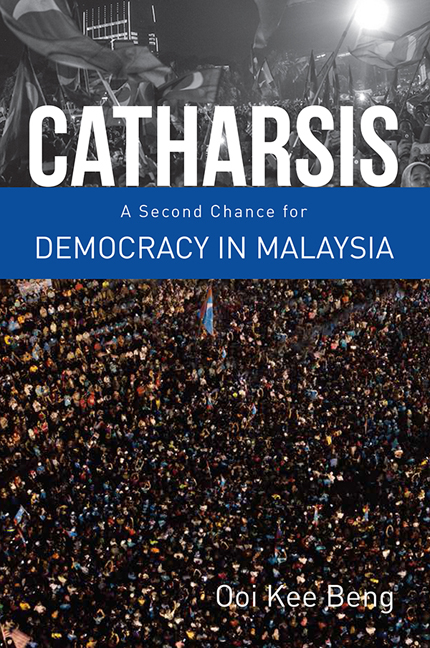Book contents
- Frontmatter
- Contents
- Foreword
- 1 Introduction – Malaysia's Future Is Redeemed
- Before Pakatan Harapan
- Before 9 May 2018
- With Mahathir at the Helm
- Beyond 9 May 2018
- 47 The Bewildering Game of Malaysian Politics, the Rot Within the Barisan Nasional
- 48 A Revolution in Malaysia? Not So Fast…
- 49 Mahathir: Renaissance Man
- 50 Malaysia's Reformasi Movement Lives Up To Its Name
- 51 In Lieu of Race and Religion
- 52 It All Seems So Simple Now…
- 53 Catharsis – The Rebirth of Malaysia Finally Begins
- 54 A Malaysian Spring for Intelligentsia?
- 55 The Layers of Historical Significance of GE14
- About the Author
55 - The Layers of Historical Significance of GE14
from Beyond 9 May 2018
Published online by Cambridge University Press: 12 February 2019
- Frontmatter
- Contents
- Foreword
- 1 Introduction – Malaysia's Future Is Redeemed
- Before Pakatan Harapan
- Before 9 May 2018
- With Mahathir at the Helm
- Beyond 9 May 2018
- 47 The Bewildering Game of Malaysian Politics, the Rot Within the Barisan Nasional
- 48 A Revolution in Malaysia? Not So Fast…
- 49 Mahathir: Renaissance Man
- 50 Malaysia's Reformasi Movement Lives Up To Its Name
- 51 In Lieu of Race and Religion
- 52 It All Seems So Simple Now…
- 53 Catharsis – The Rebirth of Malaysia Finally Begins
- 54 A Malaysian Spring for Intelligentsia?
- 55 The Layers of Historical Significance of GE14
- About the Author
Summary
Whatever one's politics may be, one has to admit that the origins of the Federation of Malaysia are complicated and are overlaps of compromises made over time to define a middle ground that was democratic enough and yet centralised enough to be comfortably stable.
The middle ground that developed, however, came almost always to be defined in terms of racial balances, to the detriment of other parameters relevant to a modern economy, such as class tensions, urban-rural divides and various socio-economic gaps.
The defeat of the long-standing Barisan Nasional government and its almost immediate implosion on 9 May 2018, can in a way be described as the result of the Najib Razak administration's unwise rejection of the middle ground, which allowed for the coming together of forces opposed to it. With the Islamists pulling on one side and Pakatan Harapan gathering substantial numbers of rural voters over to its urban support base, UMNO and its long-ruling coalition were side-lined.
Now, one can see 9 May 2018 as a unique election in that sense, i.e. simply an aberration in a system that had for a long time been the established situation. But that would leave a lot of questions unanswered, foremost of which involves the reformist agenda that the new government under Tun Dr Mahathir Mohamad is keen to champion, and to be seen to champion.
Revisiting National History
The significance of 9 May, to any historian interested in Malaysian politics, is in fact enormous, and in some ways warrants a revisit to the whole post-war period. As you, dear reader, would know, accounts of history are refined and defined by the historian's art of periodisation.
Apart from a news reporter description of the election as an aberration, one could for example consider 9 May to be the finale to a Tale of Three Elections stretching from 2008 when the BN lost five states to the opposition, to 2013 when it held its ground without winning back much of what had been lost, and ending with its calamitous fall in 2018. At one level, this would be a description of the triumph of the electoral strategising of the supporters of Anwar Ibrahim following their defeat in the 2004 election; and at another, the inability of UMNO to keep the middle ground after the failure of Abdullah's exaggerated claims at reform in the aftermath of Mahathir's retirement in 2003.
- Type
- Chapter
- Information
- CatharsisA Second Chance for Democracy in Malaysia, pp. 218 - 221Publisher: ISEAS–Yusof Ishak InstitutePrint publication year: 2018

